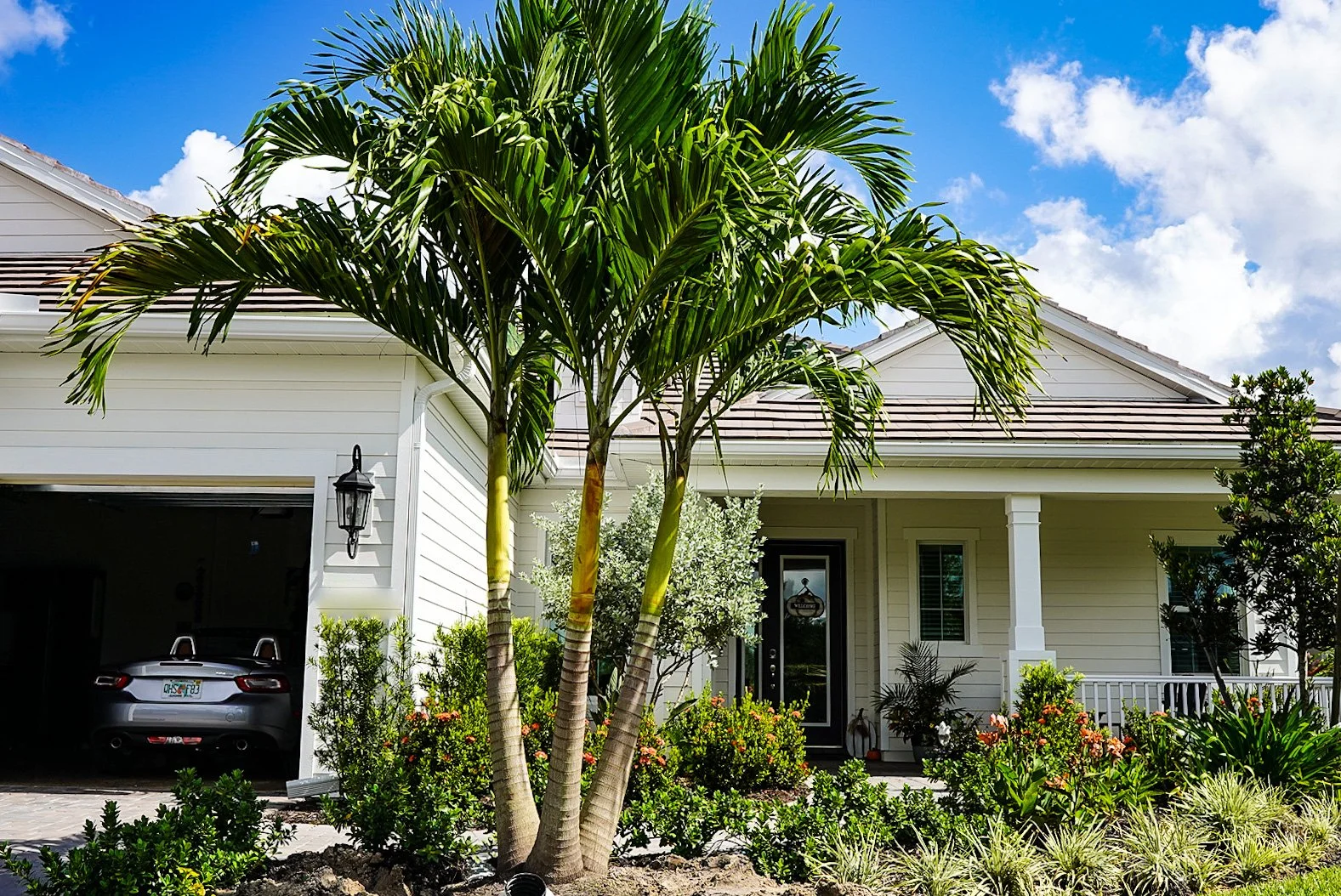Christmas Palms: A Perfect Choice for Florida Landscapes
The Christmas Palm (Adonidia merrillii), also known as the Manila Palm, is a favorite among Florida homeowners and landscapers for its manageable size, elegant appearance, and festive red fruit that resembles holiday ornaments. Originating from the Philippines, this tropical beauty thrives in Southwest Florida’s warm climate and sandy soils, making it a popular choice for residential and commercial landscapes.
Why Are They Called Christmas Palms?
Christmas Palms get their name from the vibrant clusters of red fruits, or drupes, that appear during the holiday season. These bright pops of color contrast beautifully with the palm’s glossy, feather-like green fronds, adding a cheerful touch to any landscape.
Key Features of the Christmas Palm
Size: These palms are ideal for smaller spaces, reaching a height of 10–20 feet at maturity. Their compact growth makes them perfect for patios, poolside areas, and entryways.
Trunk: The slender, smooth trunk has a light gray color with distinctive ringed markings, giving it a polished and sophisticated look.
Fronds: The fronds arch gracefully, creating a lush and tropical canopy.
Fruit: Beyond their decorative appeal, the red fruits are non-toxic to humans and animals, though they are generally not consumed.
Ideal Growing Conditions
Christmas Palms are well-suited for Southwest Florida’s tropical and subtropical environment. Here's what they need to thrive:
Sunlight: Full sun to partial shade.
Soil: Well-drained, sandy soils are ideal, but they can tolerate slightly alkaline soils common in coastal areas.
Water: Moderate watering is required, especially during establishment. Once mature, they are drought-tolerant but appreciate occasional watering during dry spells.
Temperature: These palms thrive in zones 10–11 and are not frost-tolerant, making them perfect for Florida’s mild winters.
Landscaping with Christmas Palms
Christmas Palms are versatile and can be planted as:
Single Specimens: Their elegant silhouette makes them a striking focal point in gardens or courtyards.
Clusters: Planting them in groups of three or more creates a lush, tropical effect.
Containers: These palms can be grown in large pots for patios or balconies, provided they receive ample sunlight and proper drainage.
Care and Maintenance
Pruning: Minimal pruning is required, mainly to remove dead fronds or fruit stalks.
Fertilizing: Use a balanced palm fertilizer with micronutrients 2–3 times a year to prevent deficiencies.
Pest and Disease Management: Christmas Palms are relatively resistant to pests but may occasionally attract scale or spider mites. Regular inspection and proper care can help mitigate issues.
Benefits of Adding Christmas Palms to Your Landscape
Aesthetic Appeal: Their festive fruits and graceful fronds add year-round beauty.
Low Maintenance: Once established, they require minimal care.
Wildlife-Friendly: The red fruits attract birds and other wildlife, enhancing the biodiversity of your garden.
Where to Find Christmas Palms
If you’re looking to add Christmas Palms to your landscape, visit our nursery in Cape Coral, Florida. We carry high-quality specimens and can provide expert advice on planting and care.
Christmas Palms are an excellent choice for creating a tropical, elegant, and festive landscape. Whether you’re designing a new garden or enhancing an existing one, these palms are sure to bring beauty and holiday cheer to your outdoor space.

